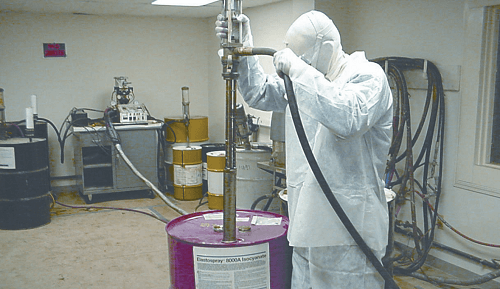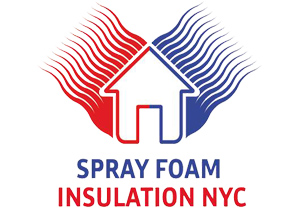RESIDENTIAL ENERGY EFFICIENCY
SECTION ECC R401 GENERAL
R401.1 Scope. This chapter applies to residential buildings.R401.2 Compliance.Projects shall comply with one of the following:
- Sections R401 through R404.
- Section R405 and the provisions of Sections R401 through R404 labeled “Mandatory.”
- An energy rating index (ERI) approach in Section R406.
R401.3 Certificate (Mandatory). A permanent certificate shall be completed by the builder or registered design professional and posted on a wall in the space where the furnace is located, a utility room or an approved location inside the building. Where located on an electrical panel, the certificate shall not cover or obstruct the visibility of the circuit directory label, service disconnect label or other required labels.
NEW ENERGY CODE MEANS BIG EFFICIENCY GAINS FOR CITY AND STATE
Today, the City Council unanimously voted to adopt a new New York City Energy Conservation Code (NYCECC) that will drive greater efficiencies in NYC buildings in the years ahead. The update represents a big step forward for the city’s 2050 carbon reduction goals, with projected energy savings compared to the current code clocking in at nearly 9% for commercial buildings and up to an impressive 32% for residential buildings
Energy-Saving Tips - Residents and Homeowners

Air Conditioner
- To prevent energy loss as winter approaches, remove your window-unit air conditioner or insulate it from the outside with a tight-fitting cover, available at local home improvement or hardware stores.
- Each degree above 75°F that you set your air conditioner’s thermostat saves you 3% of the energy used to cool your home.
Attic Vents
- Make sure attic vents are not blocked so air can flow freely to minimize the use of an attic vent fan.
Disposal of Used Spray Polyurethane Foam Drums
By Neeva-Gayle Candelori, Director, Center for the Polyurethanes Industry

For spray polyurethane foam (SPF) contractors, the job isn’t done until the drum is properly disposed. Sure, contractors know that disposal of drums must always proceed in accordance with the foam manufacturer’s instructions, but do they know that since empty drums are potentially hazardous, it’s crucial that they be handled properly by appropriately trained personnel?
Understanding SPF Components
The SPF components are made up of an “A” side — polymeric methylene diphenyl isocyanate, pMDI, or MDI-based diisocyanate — and a “B” side — polyol resin, polyol-based system with smaller amounts of catalyst(s), a blowing agent, flame retardant(s), and a surfactant. These components are typically purchased and shipped as a set or system of two drums, one for the “A” side and one for the “B” side. The drums may be colorcoded red or black for the “A” side, and blue or another color for the “B” side. Each drum contains shipping papers, indicating the required shipping information for that chemical, and any relevant hazard communication labels.
Subcategories
Insulation New York, NY
- Insulation Contractor | Staten Island | Commercial | Spray Foam NYC
- Insulation Contractor | Manhattan | Commercial | Spray Foam NYC
- Insulation Contractor | Queens | Commercial | Spray Foam NYC
- Insulation Contractor | Brooklyn | Commercial | Spray Foam NYC
- Insulation Contractor | Bronx | Commercial | Spray Foam NYC
- Spray Foam Insulation
- Homeowners & Builders - Spray Foam insulation - NY. NJ
- Open Cell Spray Foam Insulation
- Closed Cell Spray Foam Insulation
- Queens Spray Foam Insulation
- Staten Island Spray Foam Insulation
- Brooklyn Spray Foam Insulation
- Photo Gallery - Spray Foam Insulation
- Spray Foam Insulation Video - Higher R-value
- Referrals Program
- Best Methods For Insulating Basement Walls - Spray Foam
- Where your house leaks money
- Moisture Control - Spray Foam NY-NJ
- Manhattan Spray Foam Insulation
- NYC Spray Foam Insulation Contractor. Brooklyn, Queens, NYC
- Staten Island NY - Spray Foam Insulation Contractor
- New York Spray Foam Insulation - Spray Foam Insulation Experts.
- sprayfoam insulation new york
- Spray Foam Insulation Contractor in Brooklyn, NY
- INSULATION CONTRACTOR - SPRAY FOAM - BROOKLYN - NEW YORK
- Spray Foam Insulation Contractor in Queens, NY
- Spray Foam Insulation Contractor Staten Island NY
- Spray Foam Insulation Contractors in NY
- Spray Foam: Insulation Contractors New Jersey (NJ)
- Spray Foam NY
- Insulation Contractors in New York, NY - Spray Foam NYC
- Insulation Contractors in Brooklyn, NY - Spray Foam NYC
- Insulation Contractors in Staten Island, NY - Spray Foam NYC
- Spray Foam Insulation NYC: We Service New York & New Jersey
- Spray Foam Insulation Contractors in Hoboken, NJ
- Spray Foam Insulation Contractors in Astoria Queens, NY - Icynene
- Spray Foam Insulation Contractors - New York NY |Queens |Brooklyn
- Residential Insulation Contractors in New Jersey - Spray Foam NJ
- Why doesn’t spray foam insulation absorb or retain moisture?
- How does Spray Foam actually work.?
- What are the financial benefits of using Spray Foam insulation?
- What makes Spray Foam insulation eco-friendly?
- Does Spray Foam insulation create harmful gasses?
- What does it mean to think of a house as a ‘system’?
- How long will Spray Foam insulation last?
- Spray Foam Insulation Installers - Hoboken, Nj 07030 - Attics, Walls
- New York, NY Insulation Contractor & Air Sealing Contractor in NYC
- Spray Foam Insulation Contractor - Midtown New York, NY
- Spray Foam Insulation Contractor - Lower Manhattan New York, NY
- Spray Foam Insulation Contractor - Upper Manhattan New York, NY
- Spray Foam Insulation Contractor - Upper East Side New York, NY
- Spray Foam Insulation Contractor - Upper West Side New York, NY
- Brooklyn New York: Spray Foam Insulation Contractor
- Williamsburg Brooklyn NY: Spray Foam Insulation Contractor
- Greenpoint Brooklyn, NY: Spray Foam Insulation Contractor
- Bushwick Brooklyn, NY: Spray Foam Insulation Contractor
- Sunset Park Brooklyn, NY: Spray Foam Insulation Contractor
- East New York Brooklyn, NY: Spray Foam Insulation Contractor
- Lower Manhattan New York, NY: Spray Foam Insulation Contractor
- Edgewater New Jersey: Spray Foam Insulation Contractor
- Commercial Spray Foam Contractors | New York | New Jersey
- You Get What You Pay For: The Risk of Cheap Spray Foam Insulation Price.
- Get Ready for New York State and City's New Energy Code
- Spray Foam Insulation Long Island City Queens, NY
- Spray Foam Insulation Greenpoint Brooklyn, NY
- Spray Foam Insulation Brooklyn Heights Brooklyn, NY
- Commercial Insulation Contractors New York
- Commercial & Residential Insulation Contractor New Jersey
- West Bronx Bronx, NY: Spray Foam Insulation NYC
- East Bronx Bronx, NY: Spray Foam Insulation NYC
- Installing Mineral Wool Insulation Over Exterior Wall Sheathing
- Staten Island, NY: Spray Foam Insulation NYC
- Vented vs. Unvented Attics - Spray Foam insulation NYC
- Foam Insulation Sales Estimating Jobs, Employment | NY - NJ
- Spray Foam Insulation | Installer | Applicator | Helpers | Jobs NY-NJ
- EducationCenter
- Best Spray Foam Insulation Contractors - Brooklyn NY
- Preliminary blower door test - Staten Island NY - Brooklyn NY - Queens NY
- Insulation - Blower Door Test - Staten Island, Brooklyn, Queens
- Why Remove Attic Floor Insulation in a Spray Foam Attic
- Does Spray Foam Insulation Need a Thermal or Ignition Barrier?
- Spray Foam Insulation NYC & Lapolla AIA Accredited Training
- How to Insulate my Basement Walls - Spray Foam insulation NYC
- Spray Foam Insulation Projects
- Home Insulation - Spray Foam Insulation - Blown in Foam Insulation
- Spray Foam Insulation | Home Insulation | New York, NY
- Lapolla: Spray Foam Insulation for Homes, Commercial Buildings: NYC
- Myth: A House Needs to Breathe - Spray Foam Insulation NYC
- Best Spray Foam Insulation Contractors in Staten Island New York.
- Spray Foam Insulation Cost - Attic Insulation Costs in NY
- Questions About Spray Foam Insulation? Spray Foam Insulation NYC
- Attic-Basement-Walls-Home-Insulation-Cost-Spray-Foam-NYC
- What is Closed Cell Spray Foam Insulation? What it’s Made of, How it Works
- 2018 Crawl Space Insulation Cost|Insulating A Crawl Space|Spray Foam NYC
- 2018 Spray Foam Insulation Cost - Spray Foam insulation NYC
- Cost of Spray Foam Insulation | Insulation Installation New York, NY
- Why is my house always cold and what can I do to fix it? New York, NY
- What is Closed Cell Spray Foam Insulation? Spray Foam Insulation Cost
Page 5 of 10
